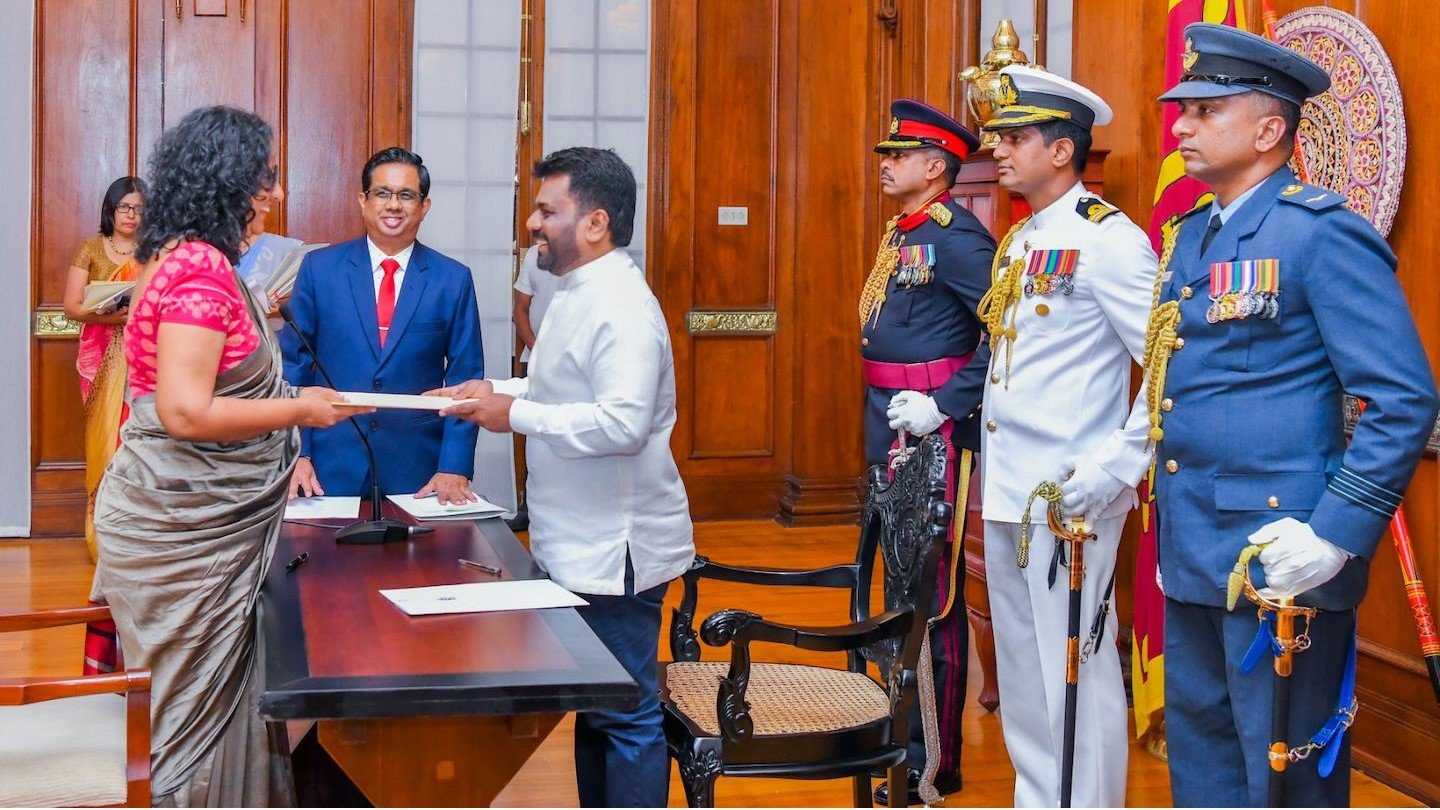
ECONOMYNEXT – Net foreign assets of Sri Lanka’s central bank have been brought to almost zero by September 2024, through consistent deflationary open market operations, after rates were hiked in April 2022.
By September 2024, the net foreign assets of the central bank were negative by only 175 million dollars from a peak of negative 4.6 billion US dollars at the height of the last currency crisis in August 2024, which ended in external sovereign default.
The central bank’s foreign reserves were a negative 4.0 billion dollars in March 2022 when the central bank hiked rates to contain domestic credit.
But due to reserves loaned by India through the Asian Clearing Union mechanism, the central bank continued to sell down reserves and re-finance domestic credit through inflationary open market or standing liquidity facilities extending the balance of payments deficits.
By July 2022, the central bank’s net reserves were negative by 4.6 billion US dollars due to a combination of using central bank swaps, legacy IMF loans and Indian loans to the central bank through the ACU mechanism.
Fortunately, the swap from the Peoples Bank of China could not be used to suppress interest rates due to restrictions on its use.
Deflationary Primary and Open Market Operations
From around September 2022, effects of deflationary policy were seen in the balance of payments (as reported) reported becoming positive due to the impact of deflationary open market operations.
Since August 2022 the central bank has collected reserves or repaid debt of around 4.3 billion US dollars to bring the negative reserve position to only 175 million US dollars by June.
The central bank has repaid swaps taken from the central bank of Bangladesh and also a swap and part of the borrowings from Reserve Bank of India with the help of deflationary open market operations and deflationary primary market operations (refraining from re-subscribing to maturing bills).
Reserves have been built mostly using current inflows bought from banks, though the government has also converted some dollar loans to rupees on occasion.
In the period commercial banks have also built reserves. Bank NFA is positive with dollar balances and foreign investments built and reducing domestic investments like Sri Lanka Development Banks. Dollar balances were also built to offset provisions on defaulted sovereign bonds.
Related
Sri Lanka banking system repays debt or builds fx reserves of US$7.4bn since default
Banks buy dollars from exporters and remittance holders by giving them existing rupees.
The central bank buys dollars from banks by giving newly created rupees to banks, expanding reserve money.
To maintain the foreign reserves and to prevent the new rupees (which are with banks as rupee reserve balances) money from being loaned to customers and generating imports the central bank has to exchange a domestic asset with a bank.
Such a sell down of domestic assets or the reduction of money given through open market operations involving standing or term reverse repo facilities leads to a permanent ‘sterilization’ of the new money. The mopping up of the new money prevents them from coming back to forex markets through domestic credit imports.
Inflationary Operations
Concerns have been raised that the central bank has begun inflationary open market operations giving banks easy money at 8.26 percent to suppress rates and push domestic credit without deposits.
Related
Sri Lanka central bank urged not to inject excess money by open market operations
Sri Lanka prints Rs100bn through open market operations
Sri Lanka central bank defends open market operations as concerns rise
Debate erupts in Sri Lanka over money printed for open vs primary market
Up to now the money has ended up as excess liquidity in the central bank’s standing facility with domestic private credit just beginning to recover and the balance of payments is still in surplus as a result.
Since aggressive inflationary open market operations started especially from 2015 to target mid-corridor policy rate, the central bank has been unable to build foreign reserves to fully cover its monetary base, showing the deterioration to its operating framework under flexible inflation targeting and potential output targeting.
Every shock to the credit system ends up being ‘accommodated’ with new money when there is a mid-corridor or single policy rate, critics say.
In Sri Lanka, as well as in countries chronic external troubles, there is a strong Mercantilist belief that imports (or current account deficits) cause forex shortages and not inflationary domestic operations of the central bank which has a monopoly on money.
In Sri Lanka oil imports, gold, and vehicles have been blamed at various times for forex shortages and not central bank credit to the government or private sector, preventing the problem from being solved permanently, after it started around 1952. (Colombo/Nov17/2024)
